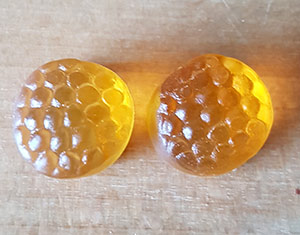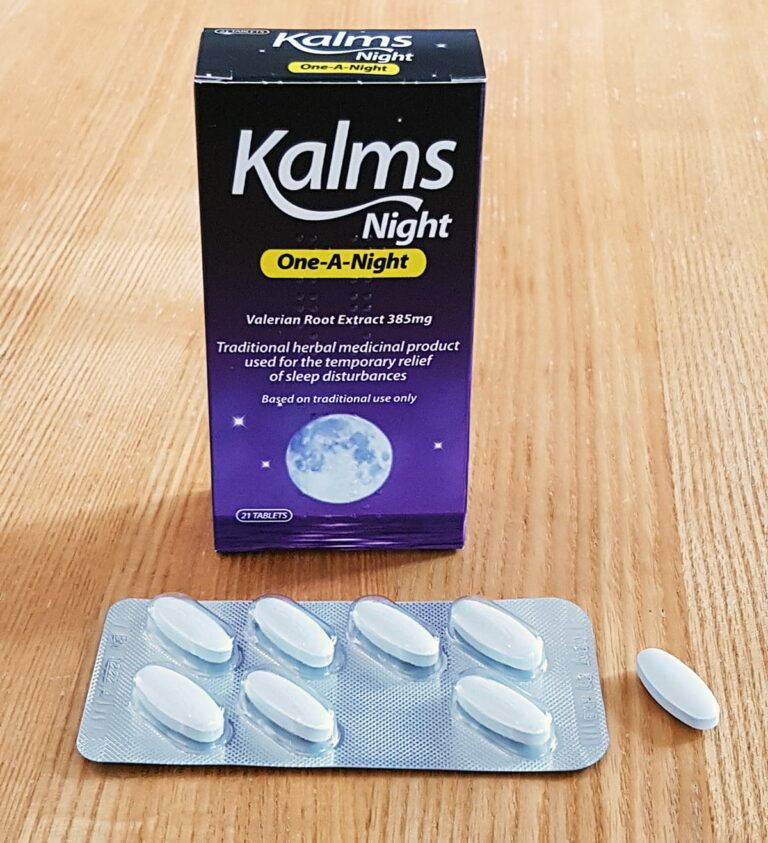
Disclosure: This review is based on my personal experience of taking Vitafusion SleepWell, and you may have a different experience. Please discuss taking any new sleep aid with a healthcare professional rather than only relying on online sources.
Updates: I first wrote this article in 2018 when I tried the Vitafusion SleepWell. The most recent update in 2024 was to remove the warnings and side effects listed when I bought it as they may have changed over time.
Vitafusion SleepWell is a non-prescription sleep aid that’s sold online and in some stores in the United States. There are different versions of it – the one I tried contains melatonin, passionflower, chamomile, and lemon balm.
Melatonin doesn’t require a prescription in the US, but does in the UK and many other countries. In the US it’s regulated as a supplement rather than a medicine.
Melatonin is different from many sleep aids in that it’s described by organisations such as the National Center for Complementary and Integrative Health as being useful for specific conditions, such as jet lag or delayed sleep-wake phase disorder. It’s not a one-size-fits-all sleep aid for anyone with insomnia.
I decided to test it for a week to see if it would help fix my out-of-whack sleep pattern, which had been disrupted by traveling.
My experience
I took Vitafusion SleepWell the night I got back from a trip abroad. My sleep pattern was around three hours in advance of what it usually would be, so I hoped the melatonin would help shift my bedtime earlier.
The label just says to take them ‘prior to sleep event’. I interpreted that as 30 minutes before, and on an empty stomach.
I took two gummies, which is the suggested dosage. They have a sweet flavour and are very easy to chew, so I imagine it’s probably a good idea to keep them out of young children’s reach!
A noticeable sedative effect
I went to bed and read a book straight after taking the gummies, which is what I always do so I can keep an eye out for any noticeable sedative effect.
I wasn’t expecting to sense anything physical, but I did. Around 45 minutes after taking them, I started to feel quite drowsy. I was admittedly tired anyway, but I couldn’t read any longer and turned the light off.
Disorientated in the night
I remember waking up a few hours later and going to the bathroom. I was still half asleep and kind of stumbled out of the bedroom in a daze.
When I made it back to bed, I went back to sleep almost instantly and then woke up seven and a half hours after first falling asleep. That’s an ideal amount of sleep for me, so I was quite happy about that.
Some grogginess in the morning
When I woke up, it felt like I was waking from a very deep sleep. I usually wake up feeling instantly alert, but it took me around 30 minutes to shake the groggy feeling.
At least the feeling of grogginess wasn’t as bad as some antihistamine sleep aids I’ve tried, such as Nytol or Sominex. With those, the morning ‘hangover’ effect was stronger and lingered for much longer.
No other noticeable side effects for me
Other than a short-lasting cloudy head and heavy eyes, I didn’t notice any other side effects. I didn’t remember any vivid dreams either, which is sometimes reported with melatonin.
The rest of the week
I took the same dosage of SleepWell every night for the rest of the week. On five of those nights, I got between seven and eight hours’ sleep, which is good for me. On two nights, it dropped back down to six and a half, which is still okay for me.
Interestingly, I had the same side effects as the first night all week. I felt disorientated when waking in the night to go to the bathroom and had a brief groggy feeling upon waking.
Sleep tracker data
I don’t usually report what my sleep trackers say about my sleep stages when I review sleep aids, as I don’t think they are 100% reliable.
However, there was a strong pattern this week which interested me. Every day, without exception, my total REM sleep jumped significantly.
I felt on good form during the day throughout the whole week and was able to perform consistently well in my sports. So perhaps there was an increase in REM sleep, and it was doing me good.
Conclusion for the week
My overall sense was that the Vitafusion SleepWell gummies worked well for me. I got a good amount of sleep all week, and my sleep schedule adjusted to the local time quickly. I felt good during the day, could work and exercise well, and the side effects were tolerable.
My only concern was the disorientated feeling when waking in the night. On reflection, I think I stumbled to the bathroom on a couple of occasions with worse coordination than I should have.
I’d also be very wary of keeping them anywhere children can get to them. They seem to glow attractively in light, look like sweets, and definitely taste like them.
In the photo below, you can see why the glowing gummies might appeal to kids:

Further information
Ingredients
The label on the bottle of Vitafusion I bought lists the active ingredients per serving (two gummies) as:
- Melatonin 3 mg
- Passionflower extract 4.25 mg
- Chamomile flower extract 4.25 mg
- Lemon balm leaf extract 4 mg
Additional non-active ingredients listed are:
- Maltitol
- Gelatin
- Water
- Citric acid
- Color (annatto extract)
- Fractionated coconut oil (with beeswax and/or carnauba wax)
- Lactic acid
- Natural flavors
- Sucralose
Note that the gummies are gluten-free, but do contain tree nuts.

Who is Vitafusion SleepWell intended for?
Since Vitafusion SleepWell falls into the category of food supplements, it doesn’t require the same rigid testing and regulation that medicines do to be approved for use for specific conditions.
The label says the melatonin in the gummies provides:
- Help with jet lag
- Sleep cycle regulation
- Awake refreshed
Bu then the label also states:
These statements have not been evaluated by the Food and Drug Administration. This product is not intended to diagnose, cure or prevent any disease…this product is not intended to treat insomnia or other sleep disorders.
I’ve seen very similar statements on several over the counter sleep aids that contain melatonin and/or herbal ingredients.
Precautions and side effects
The label on the bottle I bought didn’t list potential side effects, but did mention some groups of people who should not take it. I won’t list them here though because the current version may be different.
It’s always wise to check with a healthcare provider that a sleep aid is safe and appropriate for you to take, even if it’s available over the counter. They can give you personalised advice rather than relying on the brief description on a label.
For more information about melatonin, the WebMD website has an extensive section on melatonin, including side effects and precautions to be aware of. It also has information about the other active ingredients – passionflower, chamomile, and lemon balm.
Further reading
John Hopkins Medicine has a helpful overview of using melatonin for like insomnia.
You might also like to read my sleep hygiene article in which I discuss lots of different sleep tips.




